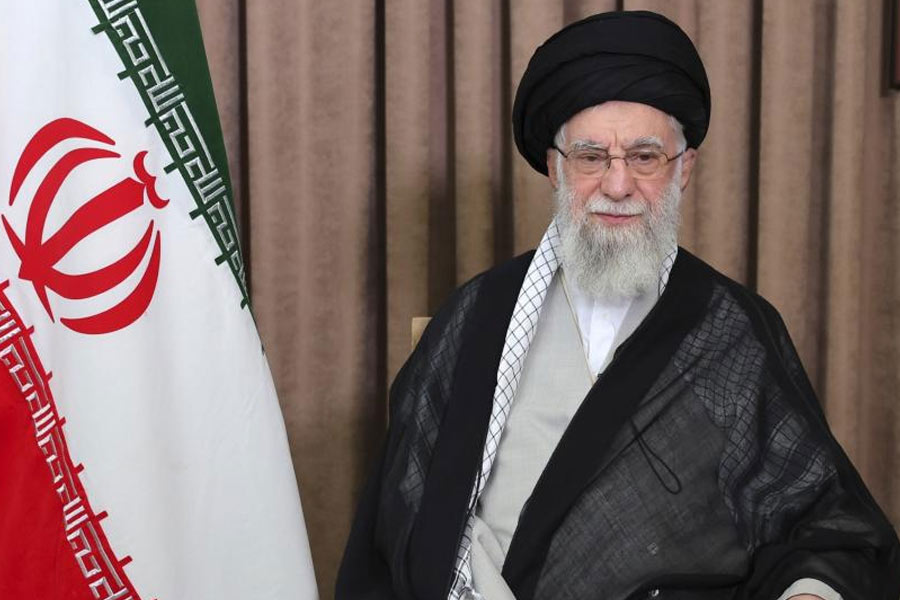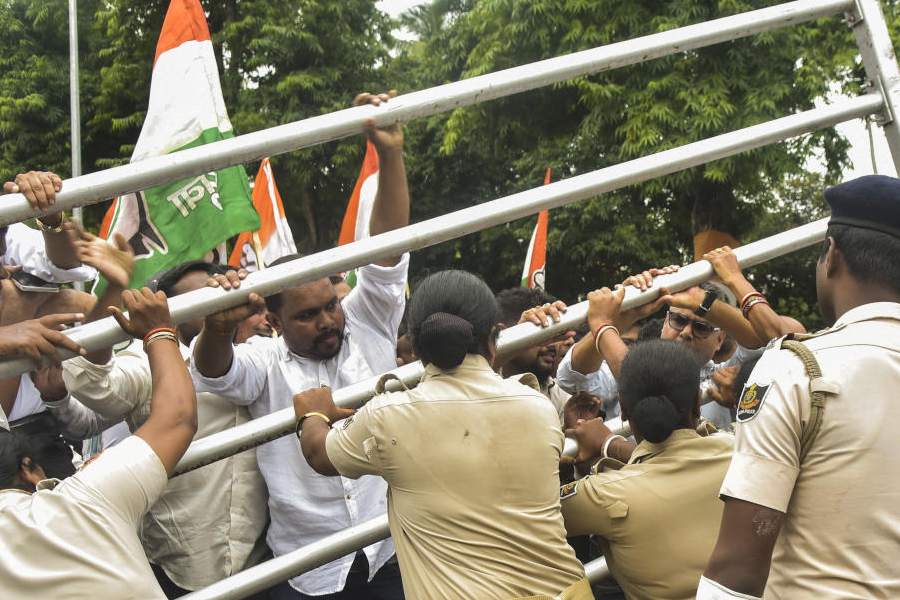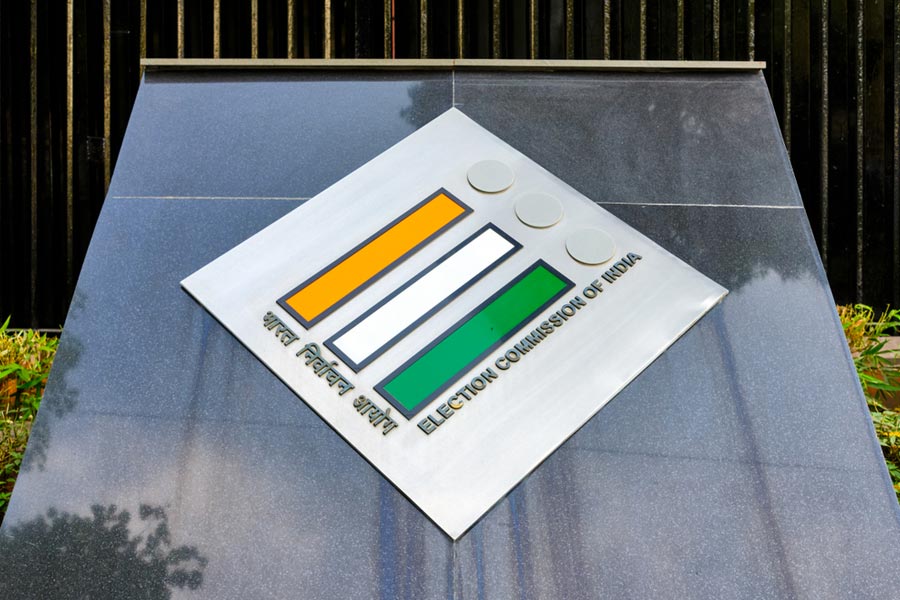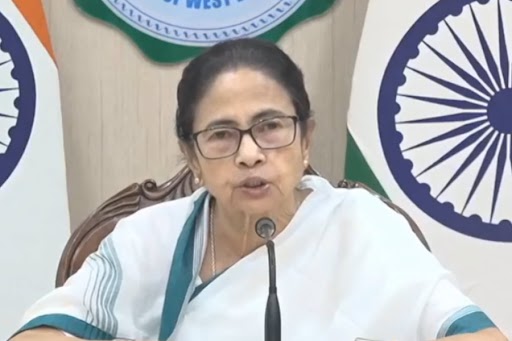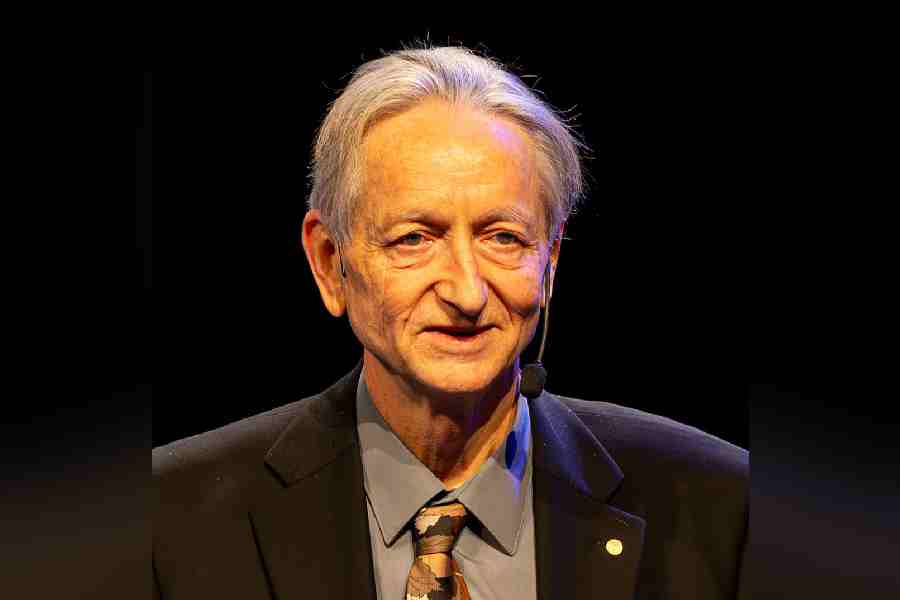 |
| Nartiang temple in Jaintia hills |
Nartiang (Jaintia Hills), Oct. 4: The Puja is minimalist, with nothing but a trunk to depict the goddess; the worshippers are not Hindus but followers of the Jaintia religion, niamtre; and Durga here has a temple.
A hamlet that Jaintia kings chose as their summer capital as early as 16th century celebrates Durga Puja in its own way — primitive and bare — attracting not only devotees but also history students, folklorists and archaeologists.
The attraction has a reason — mythology says that Durga’s bam jangha (left thigh) landed at the foothills of Jaintiapur (Jaintia Hills) during the legendary dakshya yagna, making the Nartiang temple one of the 51 shakti peeths.
Another legend says that the temple was built after the first Jaintia king converted to Hinduism in the 16th century.
The fables lends an air of mysticism to this Puja, celebrated by a village that follows an indigenous faith, said to be close to Hinduism.
The practices are still primitive — priests at the temple today sacrificed goats and pigeons to appease Jainteswari, while the devotees offered their prayers.
When Jaintia kings ruled the hills, human sacrifices were made to appease the goddess.
It was the British who banned the practice in the middle of the 19th century — goats and pigeons began being sacrificed instead.
The tunnel through which human heads rolled down to Myntang river still exists inside the temple, though some portions have been covered.
The deity, too, is unlike the dazzling sculptures elsewhere, with devotees offering prayers to a banana trunk that stands for the goddess.
The 20-year-old chief priest, Malai Deshmukh, said he was the 29th generation of priests who were entrusted with performing puja at the temple.
The Jaintia Kings had brought his ancestors from Maharashtra to perform the rituals, he said.
Scores of devotees from across India come here to offer puja every year, the priest said.
The doloi (traditional leader) of Nartiang, D. Dkhar, said the whole village takes part in the Durga Puja celebrations, eager to please the goddess and their ancestors.
“We are happy to carry forward the tradition followed by the Jaintia kings,” he added.
The central puja committee which helps maintain the temple has arranged for buses to ferry devotees to Jaintia Hills from various parts of Meghalaya.
“The occasion will facilitate religious tourism as there is a steady flow of devotees and tourists to Nartiang during Durga Puja celebrations,” the general secretary of the committee, J.L. Das, said.
Hoping to bank on “religious tourism” in a place known for its monoliths, he said the government should push for a “heritage” tag for the Jaintia temple.
Heritage tag or not, Nartiang temple will continue to inspire awe with its mix of odds.


